In a previous post, we focused on the intertwined connection between pricing rooms and forecasting rate thresholds. How they’ve become linked in our new digitally driven era. It’s an important realization needing to be made before it becomes possible to fully capitalize on revenue optimization opportunity.
In this post, we’re discussing how to leverage this influential insight to seize pricing power.
Here are several pricing improvement tips:
Think Beyond BAR Pricing
We’re all familiar with BAR, ‘Best Available Rate’, but is it really the right benchmark from which to base all pricing? While it is still a very valuable component, focusing solely on pricing based on leveraging BAR rate fails to maximize revenue potential.
Typically, hoteliers use BAR with specific amendments suiting different business mixes, including:
BAR + $20 for deluxe room
BAR + $100 for a suite
BAR – 10{97f5de9008dbce478b9914384118bb17bc275beb18053f10d4c63e347dc71139} for promotional rate
BAR + $10 for breakfast rate
BAR – 5{97f5de9008dbce478b9914384118bb17bc275beb18053f10d4c63e347dc71139} for advance purchase rate
For example, a property with a BAR rate of $100/night, will amend the rate to:
Deluxe room=$120/night
Suite=$200/night
Promotional rate=$90/night
Breakfast rate=$110/night
Advance purchase rate=$95/night
But this approach limits pricing that might be more upwardly flexible in certain areas, but not others. This methodology doesn’t mathematically allow for a surging demand segment, for example, therefore missing the chance to capture extra revenue.
BAR pricing means the revenue manager only does a single calculation (the BAR price) every day, rather than a set of calculations based on the best rate for each individual segment. A more fluid approach to rate setting is required, such as with a machine learning based revenue management system that calculates wide swaths of data, breaks it down, then provides actionable insight for each scenario.
Use channel-specific strategies
It’s also typical to have multiple rate categories for various booking channels such as direct, OTAs, in app-branded reservations, last-minute apps and more. So, revenue managers must know room rates for each rate category, how the rate was calculated, and through which channel(s) that rate is being offered.
Revenue managers must have a separate strategy for each customer type. But we don’t mean simple family versus business travel. Partner with marketing to create an effective strategy that plays into the specific hotel’s key target customers.
For example, say the hotel has a wellness focus, and marketers would like to boost business to yoga enthusiasts as a key target market. When marketing and revenue managers work in concert, rather than separately in silos, interesting opportunities can be created.
Marketing can devise a campaign targeting this specific traveler, while the revenue side crafts a rate appealing to that group. By bundling into the stay morning yoga classes with complimentary smoothies, for example, the property can achieve premium pricing. It also drives the guest to book through a specific channel, usually a higher profit yielding direct channel. Plus, guests responding to marketing messages are less price sensitive than those guests staying at the hotel for another purpose.
Be sure to review what opportunities marketing is thinking about and respond accordingly.
Offer multiple rate options (but not too many!)
Different consumers want different rooms at different prices. They also have varying reasons they’re coming to your town, each one bringing with it a new rate threshold. So, offer a few rate options. Not too many. The more choices people have, the less likely they’re going to make the right decision for your business. In “The Paradox of Choice”, a book written by American psychologist, Barry Schwartz, he writes: “Eliminating consumer choices can greatly reduce anxiety for shoppers.” In general, we recommend hotels have no more than six different rate categories. If you do, that potential guest is more likely to book with a competitor that had fewer options.
When shopping for an RMS, make sure to select one that makes it easy to offer these options to potential guests. Otherwise, having multiple rate options will create a great deal of unnecessary extra work for a revenue management team.
Final tips…
Don’t ignore the importance of forecasting (for a refresher on why forecasting is so integral for pricing, read the previous post. Remember, we’re just at the beginning of a data deluge. It’s already more than we can handle manually at any moment. It’s critical your RMS continuously collects and sorts through the data on your behalf, determining which sets are relevant on a given day. Choose a highly-sophisticated RMS to collect and analyze all online data possibilities, because it’ll help optimize pricing and channel management strategies. After all, the best technology suggests the highly-optimized rates that bring the most bookings while earning the highest possible revenue.
Don’t miss out on other great stories. Subscribe to the LodgIQ monthly newsletter today and we’ll send it right to your inbox.





